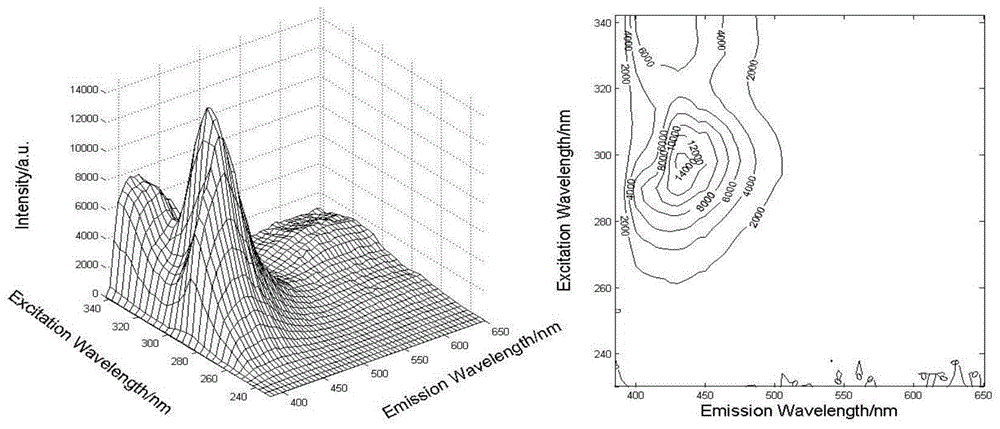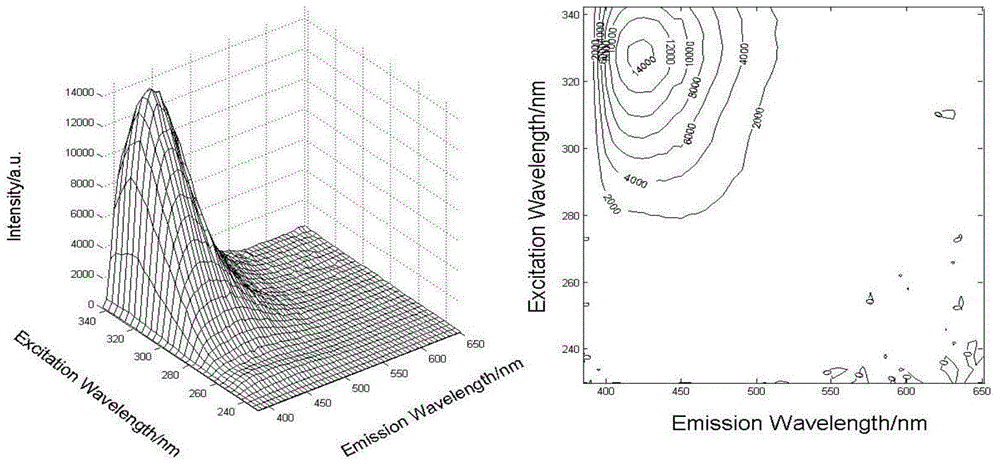Method for determining content of pigments in mixed pigment solutions by adopting three-dimensional fluorescence spectroscopy combined with PARAFAC (parallel factor analysis) algorithm
A three-dimensional fluorescence and pigment content technology, applied in fluorescence/phosphorescence, material excitation analysis, etc., can solve problems such as carcinogenicity, poor reproducibility of results, and cumbersome operation
- Summary
- Abstract
- Description
- Claims
- Application Information
AI Technical Summary
Problems solved by technology
Method used
Image
Examples
Embodiment Construction
[0028] In the following, the present invention will be further described in conjunction with the accompanying drawings and according to the operation sequence of the flowchart:
[0029] a. Preparation of calibration sample set and prediction sample set. Using ultrapure water as the background, mix the carmine and allure red according to the concentration ratio shown in Table 1. The interfering substance amaranth is randomly added in the range of 0~1ug / ml to prepare 7 experimental samples to form a calibration sample set, 5 The experimental samples constitute the prediction sample set;
[0030] b. Calibration sample set, prediction sample set and measurement of three-dimensional fluorescence spectra of ultrapure water. After preparing all the mixed samples, shake them thoroughly to mix the two pigments evenly. Then measure them in the excitation wavelength range of 230-341nm, the interval is 3nm, the emission wavelength range is 385-650nm, the interval is 5nm three-dimensional flu...
PUM
 Login to View More
Login to View More Abstract
Description
Claims
Application Information
 Login to View More
Login to View More - R&D
- Intellectual Property
- Life Sciences
- Materials
- Tech Scout
- Unparalleled Data Quality
- Higher Quality Content
- 60% Fewer Hallucinations
Browse by: Latest US Patents, China's latest patents, Technical Efficacy Thesaurus, Application Domain, Technology Topic, Popular Technical Reports.
© 2025 PatSnap. All rights reserved.Legal|Privacy policy|Modern Slavery Act Transparency Statement|Sitemap|About US| Contact US: help@patsnap.com



